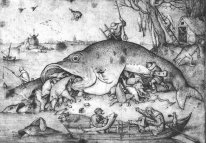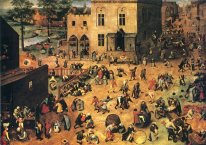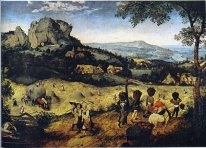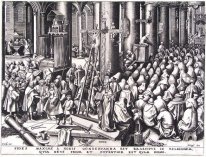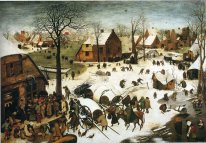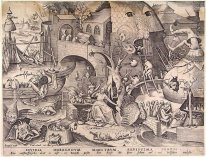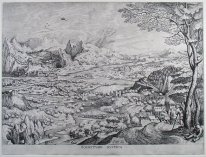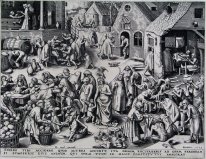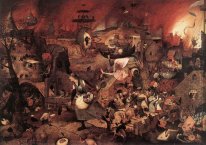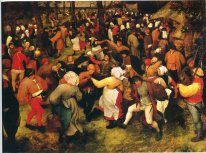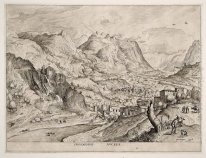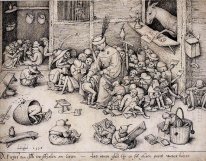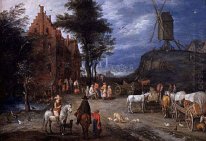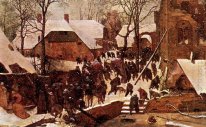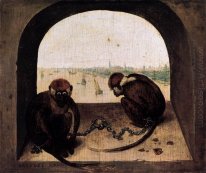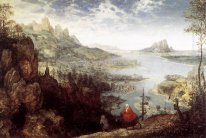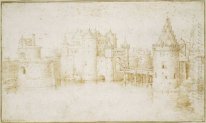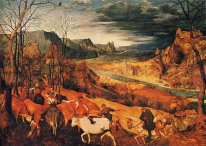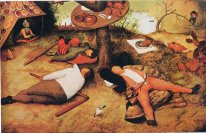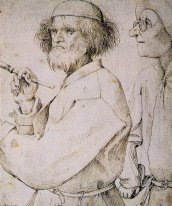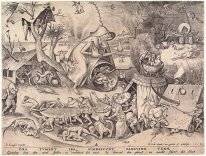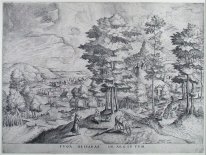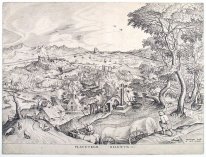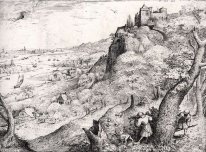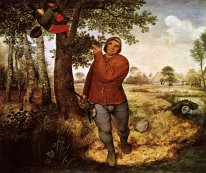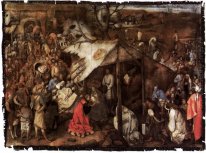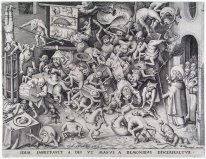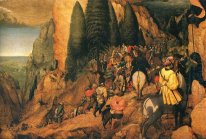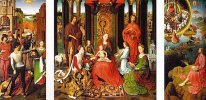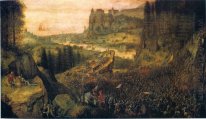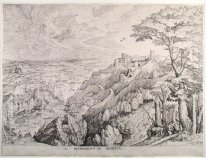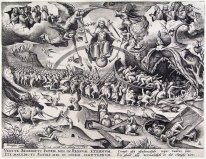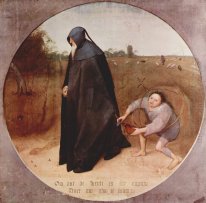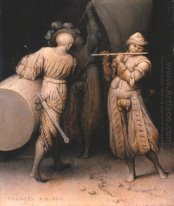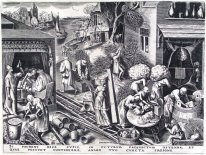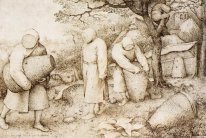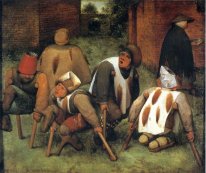Pieter Bruegel the Elder

Pieter Bruegel I (1525/30–1569), commonly known as Pieter Bruegel the Elder, was the greatest member of a large and important southern Netherlandish family of artists active for four generations in the sixteenth and seventeenth centuries.
Pieter Bruegel was born in 1525, although records aren't quite sure that is the exact year. He was either born in the Netherlands or in Belgium. The name "Bruegel", was the name of his hometown where he was born.
He spent much time working in Antwerp and Brussels. There he met his future employer, Pieter Coeck Van Aelst. Bruegel later married Pieter Aelst's daughter, Maria Aelst. They had two sons, Jan the Elder, and Pieter the Younger.
No members of his family obtained the artistic greatness of Pieter the Elder. His friends and patrons were humanists. He had a considerable reputation. Pieter was a cultured and knowledgeable man from what his friends said.
He died at the age of 44 in 1569.
He painted mainly religious paintings. Some of these reflected the influence of Biblical proverbs. Bruegel satirized the folly and sinfulness of human kind. He probably viewed organized religion as an obstacle between men and God.
Pieter also painted everyday life as well as organic views of landscapes. His paintings showed the styles of that time. "Bruegel set out to entertain and instruct with his paintings. He succeeded admirably, and created a window in both a visual and a moral sense." This is a quote from a friend of his. In 1565 he completed a series of paintings that portrayed the seasons; five of these still exist.
His paintings usually had a house in the left corner. In the right hand corner he usually had a street you could see right down. Most of his paintings were highly detailed with many peasants. His peasants were usually stocky, anonymous and sometimes coarse-figured.
He worked almost entirely for private patrons. Bruegel was the founder of a type of art that remained active well into the 17th Century.
He was considered the greatest painter of the Netherlands during the 16th Century. He became famous through engravings. His painting style changed considerably during the short span of his career.








